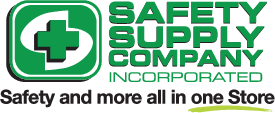In every workplace, there's an ever-present danger lurking in the shadows: complacency. It's the silent assassin that can creep into the minds of even the most dedicated employees, eroding productivity, creativity, and safety. Battling workplace complacency is not just about maintaining the status quo; it's about fostering a culture of continuous improvement, innovation, and excellence. In this blog post, we'll explore the insidious nature of complacency, its consequences, and effective strategies to combat it.
Complacency often manifests as a sense of comfort with the way things are done, a resistance to change, or a lack of urgency to improve. It's like a slow poison that gradually saps the vitality of an organization. When employees become complacent, they lose their drive to innovate, their passion for excellence dims, and their performance stagnates. Ultimately, complacency can lead to decreased productivity, increased errors, and even safety hazards in the workplace.
One of the biggest challenges in battling complacency is recognizing its presence. It's easy for complacency to disguise itself as contentment or satisfaction with the status quo. However, it's crucial for leaders to stay vigilant and attuned to the signs of complacency among their teams. These signs may include a decline in employee engagement, a lack of initiative, or a resistance to change. By proactively identifying and addressing complacency, organizations can prevent its corrosive effects from taking hold.
So, how can organizations effectively combat workplace complacency? The key lies in fostering a culture of continuous improvement and innovation. Here are some strategies to consider:
1. Set Clear Expectations: Ensure that employees understand the importance of continuous improvement and excellence in their work. Set clear performance expectations and communicate them regularly. Encourage employees to strive for excellence in everything they do.
2. Provide Opportunities for Growth: Complacency often thrives in environments where there is little room for growth or advancement. Provide employees with opportunities for learning and development, whether through training programs, mentorship opportunities, or challenging assignments. Encourage them to expand their skills and knowledge continuously.
3. Celebrate Achievements: Recognize and celebrate the achievements of employees who demonstrate excellence and innovation in their work. Positive reinforcement can help motivate employees to continue striving for excellence and discourage complacency.
4. Encourage Feedback and Collaboration: Foster a culture of open communication, where employees feel comfortable providing feedback and sharing ideas for improvement. Encourage collaboration and teamwork, as diverse perspectives can lead to innovative solutions and continuous improvement.
5. Lead by Example: Leaders play a crucial role in setting the tone for the organization. Lead by example by demonstrating a commitment to excellence, continuous improvement, and innovation in your own work. Be open to feedback, embrace change, and encourage others to do the same.
6. Regularly Evaluate and Adjust: Continuously evaluate the effectiveness of your strategies for combating complacency and be willing to adjust course as needed. Keep an eye on key performance indicators, employee engagement levels, and other metrics to gauge progress and identify areas for improvement.
By implementing these strategies, organizations can create a workplace culture that values continuous improvement, innovation, and excellence, thereby mitigating the risks of complacency. Remember, battling complacency is an ongoing effort that requires commitment, vigilance, and active participation from leaders and employees alike. Together, we can keep complacency at bay and drive success and innovation in the workplace.

